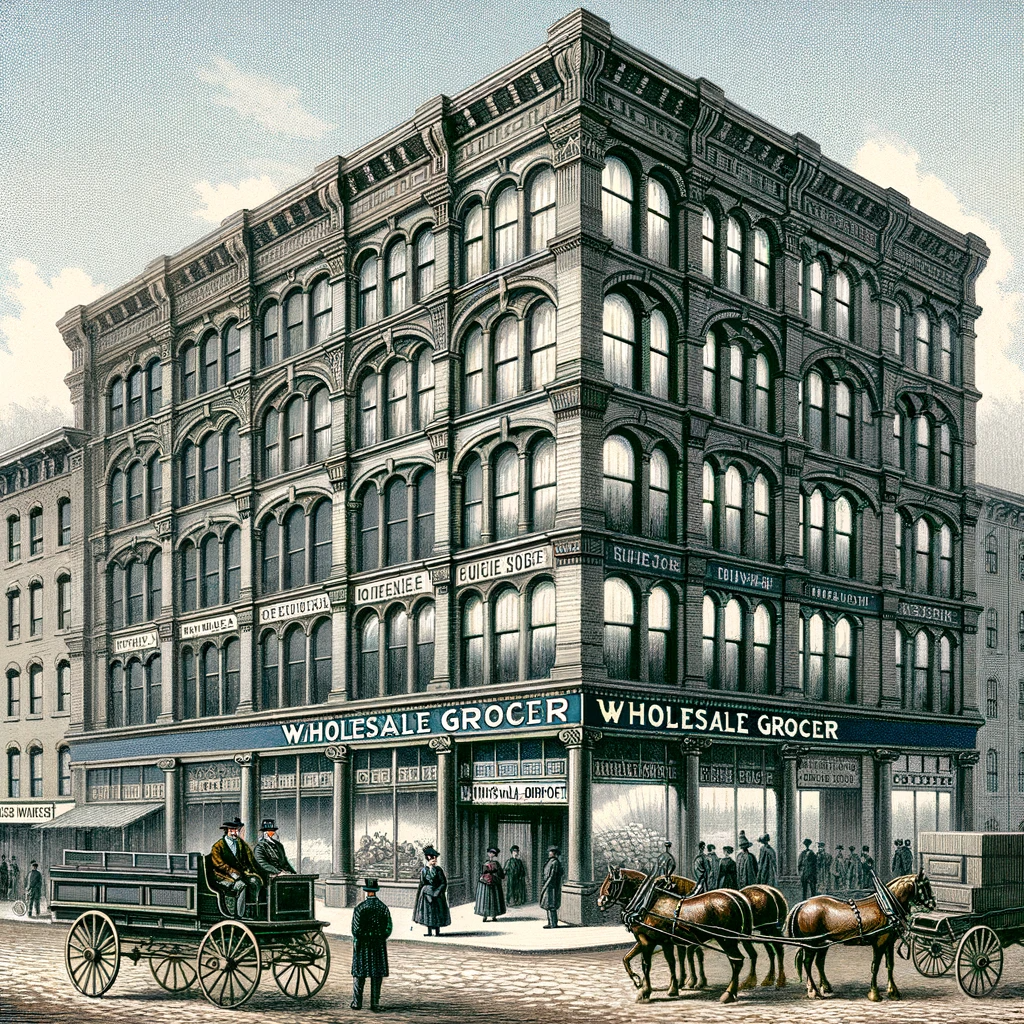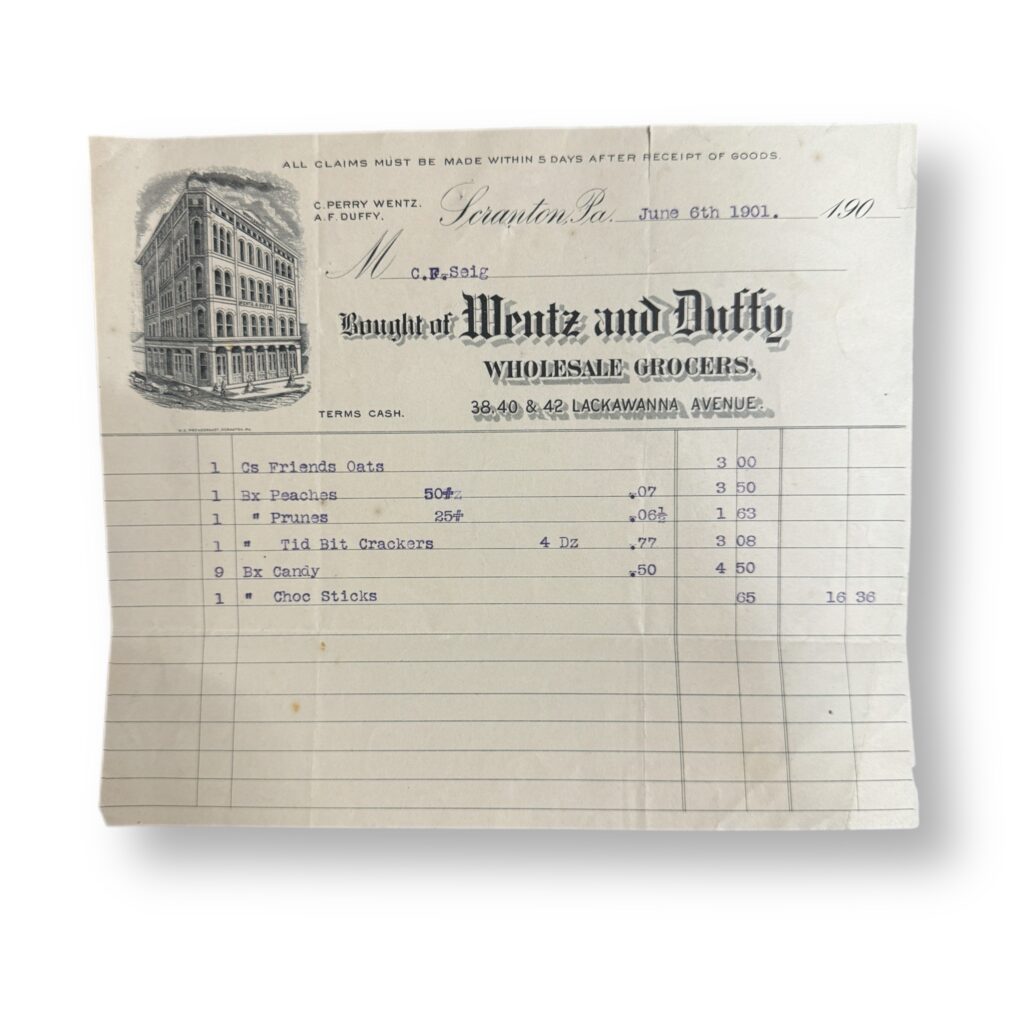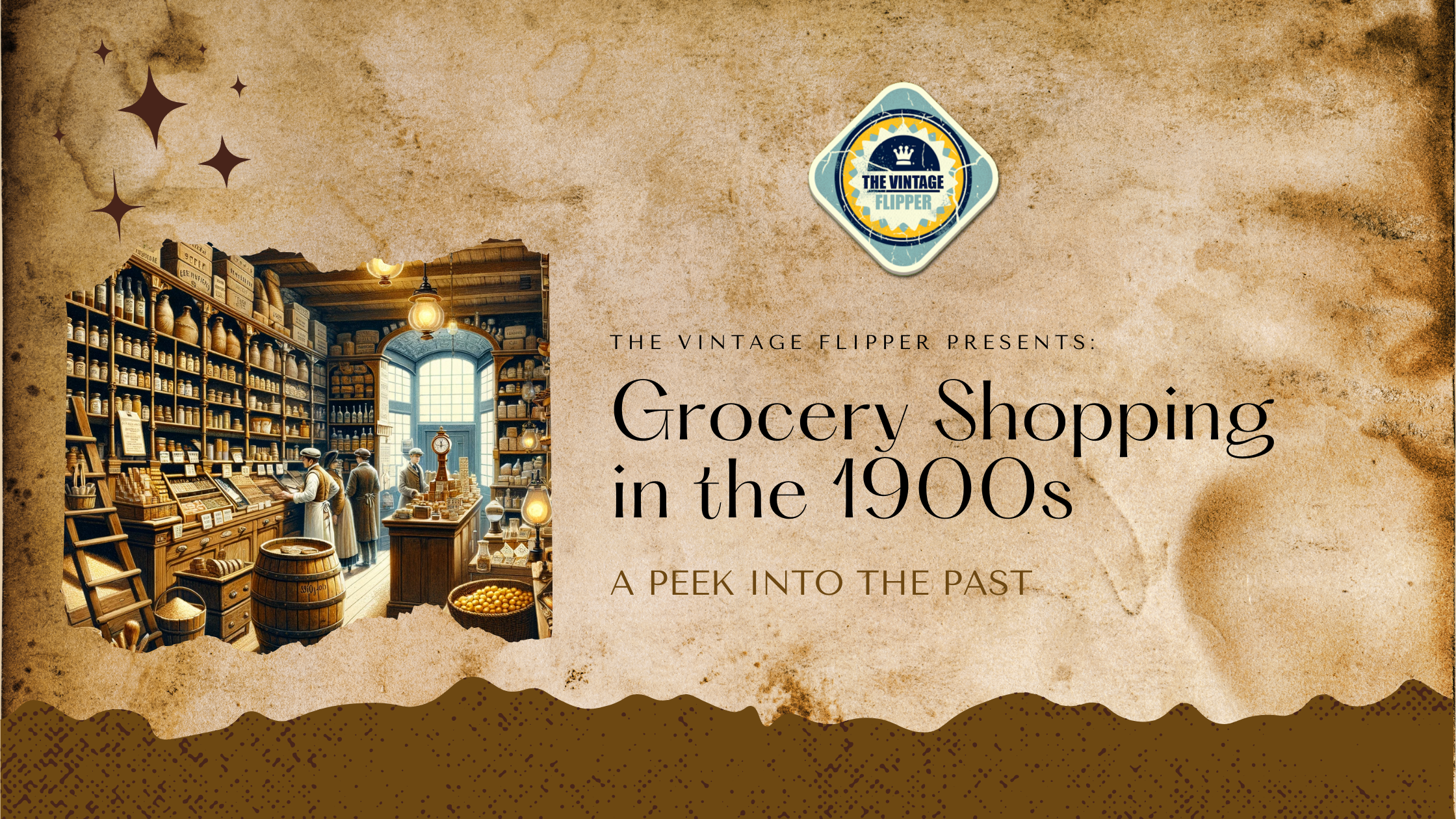As we swipe through online deals and stroll down well-lit aisles of contemporary supermarkets, it’s fascinating to step back into the cobblestone streets of the 1900s and explore the experience of grocery shopping in an era before the convenience of modern technology.

The turn of the century brought a society bustling with change. The Industrial Revolution was in full swing, and with it came the growth of urban centers. Amidst this backdrop, buying groceries was an entirely different affair than it is today.
The local grocer was a cornerstone of every neighborhood. These stores were small, family-run, and specialized. Unlike today’s one-stop shops, a day’s shopping might involve visiting multiple vendors: the butcher for meat, the bakery for bread, and the greengrocer for fruits and vegetables.
Wholesale grocers were also part of this ecosystem, supplying these small businesses with bulk goods. Establishments like Wentz & Duffy Wholesale Grocers in Scranton, PA, would provide a variety of items ranging from oats to candy, pivotal in the community’s supply chain.
Shopping was a personal experience. Grocers often knew their customers by name and might extend credit based on personal trust. Cash was king, with terms such as “net 30 days” being a common sight on invoices, indicating the credit period extended to retailers.
One could also witness the clatter of horse-drawn delivery wagons, a far cry from today’s silent electric delivery vans. These wagons were an essential part of the grocery business, ensuring the timely distribution of goods in an age before refrigerated trucks and highways.
The 1900s were also a time of innovation in food preservation. Canning technology improved, and the first iterations of processed foods started to make their way onto shelves. This was the beginning of a shift that would lead to the pre-packaged convenience foods we’re familiar with today.

Grocery shopping was also more local. The concept of food being shipped from the other side of the world was foreign to the average consumer. Seasonality played a significant role in what was available, and preserving techniques such as pickling and curing were common household tasks.
However, the early 1900s also saw the seeds of change in the grocery industry with the advent of the first self-service grocery stores, setting the stage for the supermarkets we know today.
In essence, grocery shopping in the 1900s was as much a social activity as it was a necessary chore. It was about community, personal service, and a direct connection with the food chain, aspects that we are slowly trying to reintegrate into our modern shopping experience.
As we conclude our journey through the aisles of history, it’s the small slips of paper like the 1901 receipt from Wentz & Duffy, Scranton PA that inspire us to delve into the past. This unassuming piece of ephemera has opened a window into the daily lives of those who lived over a century ago, connecting us to the era’s unique shopping experience. It serves as a tangible link to the time when the food on one’s table was a communal effort, a time when each purchase was personal and every transaction told a story. So, let us cherish these remnants of bygone days, for they carry the stories of our collective heritage and the evolution of our society’s most mundane, yet intimate, of rituals — grocery shopping.
Who is the Vintage Flipper?
“The Vintage Flipper” is a captivating tale of an individual’s relentless pursuit of knowledge and adventure when stumbling upon remarkable items. Through deep dives into research, hidden stories and forgotten tales are unearthed, transporting readers to a bygone era. This thrilling journey celebrates the power of curiosity, the allure of history, and the transformative nature of remarkable discoveries.

